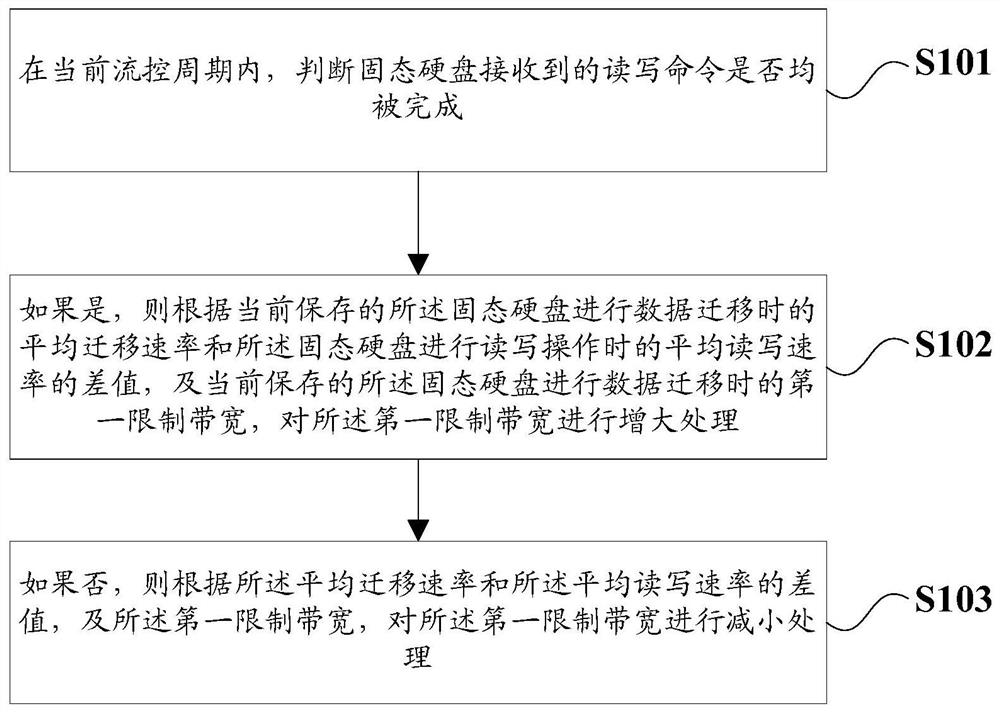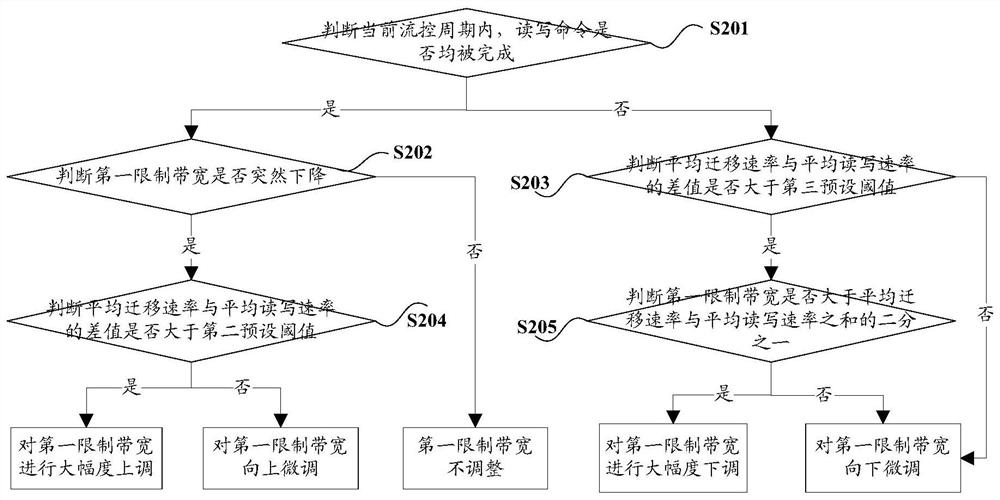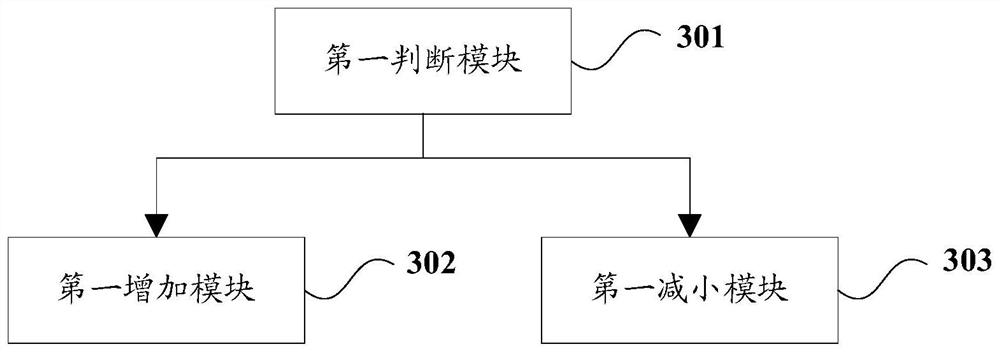Flow control method and device for data migration bandwidth of solid-state hard disk
A solid-state drive and bandwidth technology, applied in the input/output process of data processing, electrical digital data processing, instruments, etc., can solve the problems of solid-state drive limitation, video loss, and inability to migrate and adjust data, so as to avoid the waste of bandwidth resources. , the effect of increasing the speed
- Summary
- Abstract
- Description
- Claims
- Application Information
AI Technical Summary
Problems solved by technology
Method used
Image
Examples
Embodiment 1
[0090] Since the current flow control scheme of solid-state drives is mainly aimed at consumer usage needs, in order to achieve the purpose of fast data migration, the bandwidth of data migration will not be limited, so the impact of data migration on the read and write rate is ignored. In the storage of video surveillance, continuous writing is required, and the read / write rate must not fluctuate greatly, so the existing flow control scheme of solid-state hard disk is not suitable for solid-state hard disk for storing video surveillance.
[0091] Therefore, in order to solve the problem of video loss or freeze during video playback caused by data migration due to solid-state hard drives, which will cause bad user experience, the embodiment of the present invention provides a solid-state hard drive suitable for storing video surveillance data. Flow control method during migration, where, figure 1 It is a flowchart of a flow control method for data migration bandwidth of a soli...
Embodiment 2
[0104] Due to the technical problems solved by the embodiments of the present invention, it can be seen that the purpose of limiting and adjusting the bandwidth of the solid-state hard disk during data migration is to ensure that the read-write rate is not affected. Therefore, in the embodiment of the present invention, in step S102, according to the difference between the currently saved average migration rate of the solid-state hard disk during data migration and the average read-write rate of the solid-state hard disk when performing read and write operations, and the currently saved The first limited bandwidth when the solid-state hard disk performs data migration, before increasing the first limited bandwidth, the method further includes:
[0105] Judging whether the difference between the average migration rate and the first limited bandwidth of the currently stored solid-state disk for data migration is greater than a first preset threshold, where the first preset thresh...
Embodiment 3
[0118] On the basis of the above-mentioned embodiments, when determining whether to substantially lower or fine-tune the first limited bandwidth according to the difference between the average migration rate and the average read / write rate, step S103, according to the average migration rate and the average read / write The write rate difference, and the first limited bandwidth, reducing the first limited bandwidth specifically includes:
[0119] Judging whether the difference between the average migration rate and the average read / write rate is greater than a second preset threshold, where the second preset threshold is a positive number.
[0120] Because the read and write commands received by the solid-state hard disk have not been completed, it may be because the first limit bandwidth is too high, which leads to a faster data migration rate and a slower read and write rate within the limited transmission bandwidth, resulting in read and write failures. The command was not com...
PUM
 Login to View More
Login to View More Abstract
Description
Claims
Application Information
 Login to View More
Login to View More - R&D
- Intellectual Property
- Life Sciences
- Materials
- Tech Scout
- Unparalleled Data Quality
- Higher Quality Content
- 60% Fewer Hallucinations
Browse by: Latest US Patents, China's latest patents, Technical Efficacy Thesaurus, Application Domain, Technology Topic, Popular Technical Reports.
© 2025 PatSnap. All rights reserved.Legal|Privacy policy|Modern Slavery Act Transparency Statement|Sitemap|About US| Contact US: help@patsnap.com



